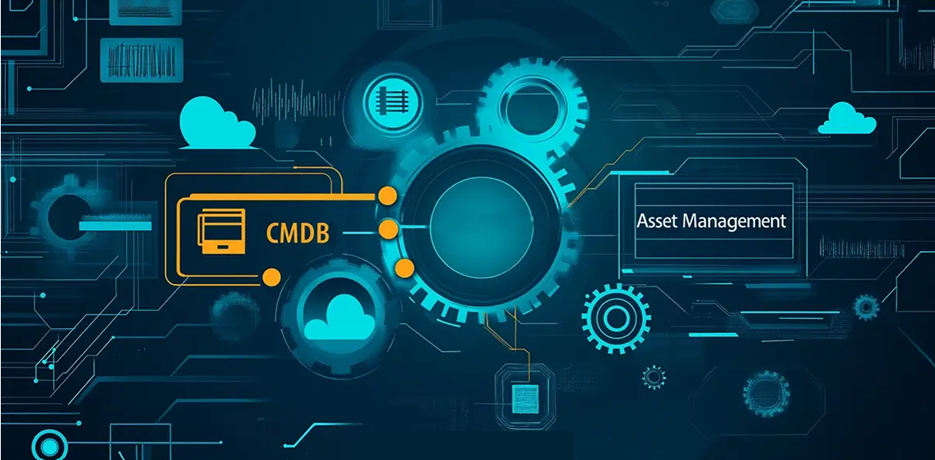
In today’s fast-paced digital landscape, organizations rely heavily on IT infrastructure to maintain operations, deliver services, and ensure business continuity. Managing IT assets efficiently is crucial, and this is where a Configuration Management Database (CMDB) comes into play. CMDB is not just a technical tool; it is the central hub that provides complete visibility into an organization’s IT ecosystem. This article explores what CMDB is, its benefits, how it works, and why it is indispensable for modern businesses.
What is a CMDB?
A Configuration Management Database (CMDB) is a centralized repository that stores information about an organization’s IT assets, also known as Configuration Items (CIs). These items can include hardware, software, networks, servers, applications, and even personnel associated with IT operations. The purpose of a CMDB is to maintain a detailed, up-to-date view of the IT environment to support decision-making, incident management, and strategic planning.
By consolidating data from various sources, a CMDB helps IT teams understand the relationships between different components, assess risks, and streamline operations. Essentially, it acts as the single source of truth for IT infrastructure.
Key Components of a CMDB
A CMDB is more than just a list of assets. It includes multiple layers of information that allow organizations to manage their IT environment effectively. Key components include:
- Configuration Items (CIs): The individual assets or resources that make up the IT infrastructure. Each CI contains attributes such as name, type, owner, location, and status.
- Relationships: A CMDB captures the dependencies between CIs, showing how different components interact and impact each other.
- Lifecycle Information: Details on the lifecycle of each asset, from procurement and deployment to maintenance and retirement.
- Change History: A record of modifications, updates, and configurations applied to each CI.
These elements ensure that IT teams can make informed decisions, respond to issues faster, and prevent service disruptions.
Benefits of Implementing a CMDB
Organizations that invest in a CMDB experience a wide range of benefits that improve both IT operations and business outcomes:
- Enhanced Visibility: CMDB provides a comprehensive view of all IT assets, their configurations, and interdependencies. This visibility is crucial for understanding potential impacts of changes or incidents.
- Improved Incident Management: When a system fails or an incident occurs, IT teams can quickly identify affected components and dependencies, reducing downtime and improving response times.
- Streamlined Change Management: By analyzing the impact of proposed changes, a CMDB minimizes risks associated with updates or modifications to IT systems.
- Regulatory Compliance: Many industries require strict record-keeping of IT assets. CMDB helps maintain compliance by providing accurate, auditable records.
- Cost Optimization: By tracking the utilization and lifecycle of assets, organizations can make informed decisions about resource allocation, reducing unnecessary expenditures.
How CMDB Works
The functionality of a CMDB revolves around continuous data collection, updates, and analysis. Here’s how it typically works:
- Data Collection: The CMDB collects information from various IT systems, including monitoring tools, asset management systems, and service management platforms.
- Data Normalization: Information from multiple sources is standardized to create a consistent view of the IT environment.
- Relationship Mapping: Dependencies between assets are mapped to understand how changes or failures in one component affect others.
- Reporting and Analytics: IT teams can generate reports and insights for proactive management, predictive maintenance, and strategic planning.
Automated discovery tools and integrations with IT service management (ITSM) solutions enhance the accuracy and efficiency of CMDB operations.
Common Use Cases of CMDB
A CMDB is versatile and can be applied across various IT management scenarios:
- Incident and Problem Management: Quickly identify root causes of incidents and reduce mean time to resolution (MTTR).
- Change Management: Assess the risk of planned changes and ensure minimal disruption to operations.
- IT Asset Management: Maintain accurate inventory and lifecycle data for hardware, software, and virtual assets.
- Capacity Planning: Analyze current resource usage and forecast future infrastructure needs.
- Disaster Recovery: Create detailed plans by understanding critical assets and their dependencies.
These use cases highlight why CMDB is not just a database but a strategic tool for IT governance.
Best Practices for CMDB Implementation
Implementing a CMDB effectively requires careful planning and adherence to best practices:
- Define Clear Objectives: Establish the goals of your CMDB, such as improving incident response or enhancing compliance.
- Identify Critical CIs: Focus on key assets and their dependencies before expanding to the entire IT infrastructure.
- Maintain Accurate Data: Ensure that all entries are regularly updated and validated to prevent errors.
- Integrate with ITSM Tools: A CMDB works best when integrated with incident, change, and asset management systems.
- Regular Audits: Periodic reviews help maintain data integrity and relevance.
By following these best practices, organizations can maximize the value of their CMDB investment.
Challenges in CMDB Management
While CMDBs provide significant benefits, organizations often face challenges:
- Data Accuracy: Ensuring up-to-date information across all assets can be difficult in dynamic IT environments.
- Complex Relationships: Mapping dependencies between numerous components requires advanced tools and expertise.
- Change Management: Rapid changes in infrastructure can outpace updates to the CMDB, leading to gaps in visibility.
- Integration Issues: Consolidating data from multiple sources and systems can be technically complex.
Addressing these challenges requires a combination of automation, skilled personnel, and regular monitoring.
Future of CMDB
The evolution of IT environments, including cloud computing, IoT, and hybrid infrastructures, has transformed the role of CMDB. Modern CMDB solutions leverage artificial intelligence, machine learning, and automation to provide predictive insights, detect anomalies, and streamline IT operations. Organizations adopting next-generation CMDBs gain a competitive edge by proactively managing assets and reducing risks before they impact business continuity.
Conclusion
A CMDB is the foundation for effective IT management. By offering visibility, structure, and control over IT assets and their relationships, it empowers organizations to optimize performance, enhance compliance, and reduce operational risks. Investing in a robust CMDB strategy ensures that IT teams can respond swiftly to challenges, plan strategically, and drive overall business success.
FAQs
Q1: What is the main purpose of a CMDB?
A CMDB centralizes information about all IT assets, their relationships, and configurations. Its main purpose is to improve visibility, facilitate incident and change management, and support strategic IT decisions.
Q2: How does CMDB improve incident management?
By providing detailed information about assets and their dependencies, a CMDB allows IT teams to quickly identify the root cause of incidents, reducing downtime and improving service reliability.
Q3: Can CMDB integrate with other IT tools?
Yes, CMDB integrates seamlessly with IT service management platforms, monitoring tools, and asset management systems to provide a comprehensive view of IT infrastructure.
Q4: What are Configuration Items (CIs)?
CIs are the individual components of the IT environment, including hardware, software, networks, and even personnel. Each CI has attributes, relationships, and lifecycle information stored in the CMDB.
Q5: Why is data accuracy critical in CMDB?
Accurate data ensures reliable decision-making, minimizes risks during changes, and maintains compliance. Outdated or incorrect information can lead to operational disruptions and inefficiencies.
